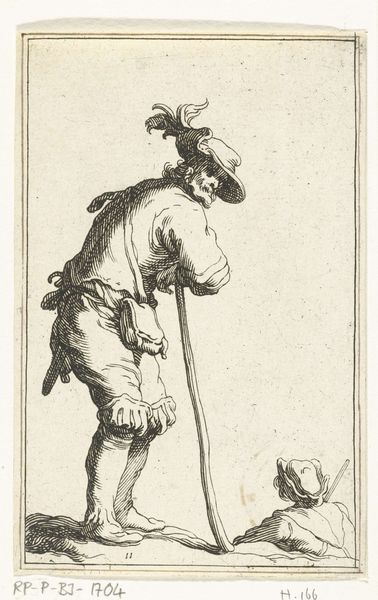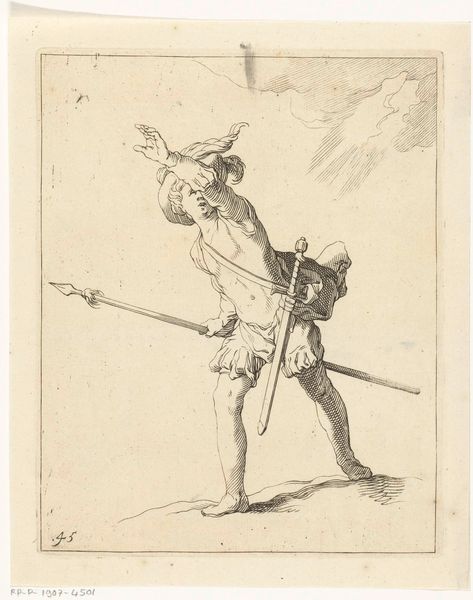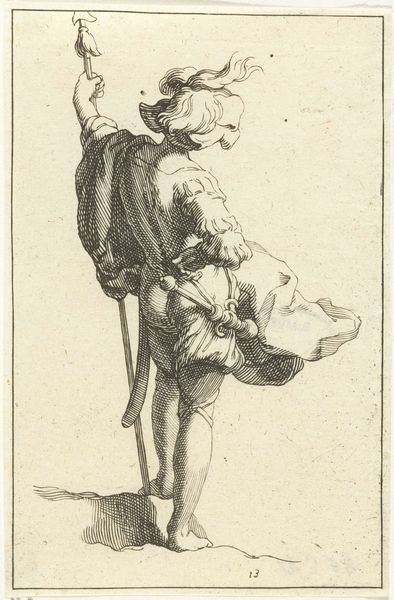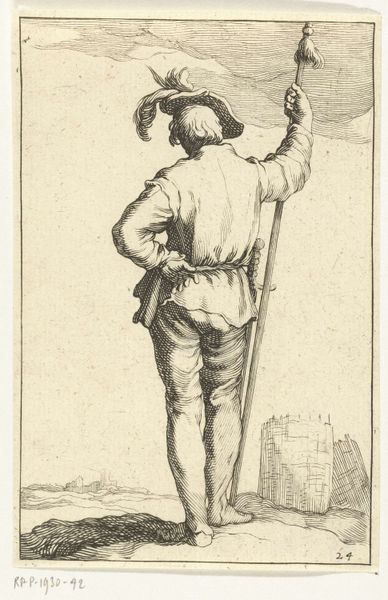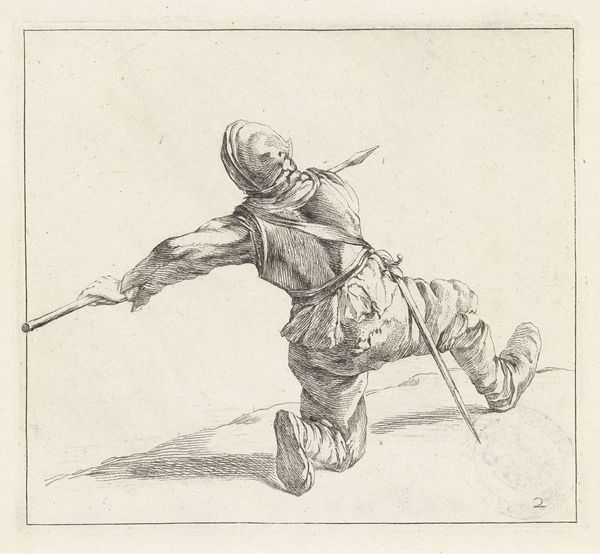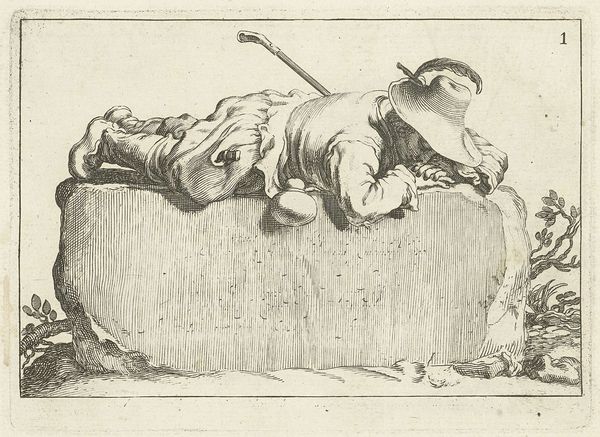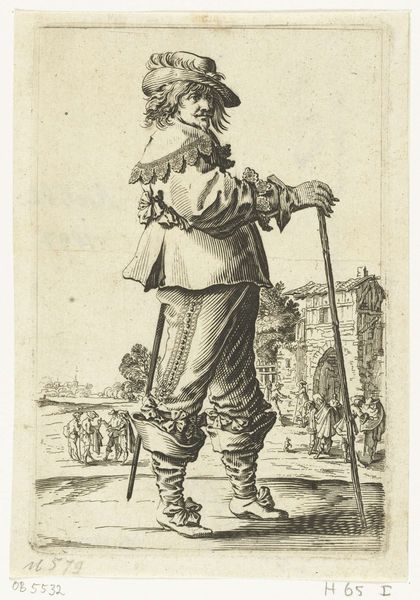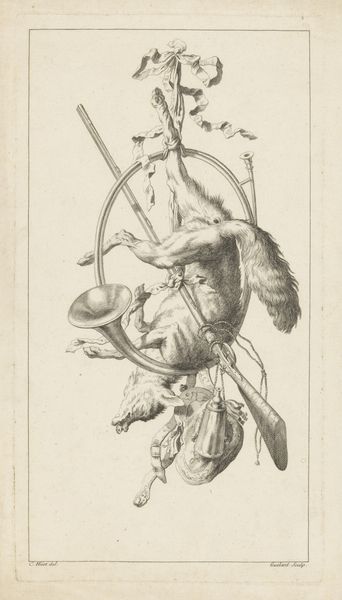
drawing, ink
#
portrait
#
drawing
#
baroque
#
dog
#
figuration
#
ink
#
line
#
genre-painting
Dimensions: height 120 mm, width 80 mm
Copyright: Rijks Museum: Open Domain
Curator: This striking piece at the Rijksmuseum is called "Jonge Soldaat" or "Young Soldier," a drawing by Frederick Bloemaert from after 1635, rendered in ink using precise line work. It’s undeniably Baroque in its sensibilities. What are your initial thoughts? Editor: The first thing that jumps out at me is this figure’s strange stance, almost theatrical, caught mid-motion. His grip on the staff, the positioning of the dog—it feels precarious, imbalanced. Curator: It's a compelling combination, isn't it? Soldiers are typically associated with war and conquest, yet here he is presented almost as a pastoral figure, even with the rather incongruous dog looking on. Notice the details of his attire—the soft folds of his shirt, the elaborate plumed hat – all indicating a kind of youthful bravado. The bird-like symbol, it speaks of ascension, perhaps an eagerness to prove himself. Editor: I find myself questioning that "youthful bravado" assessment. To me, the inclusion of the dog humanizes the soldier, offering him something akin to a vulnerable familiarity amidst violent and patriarchal conditions of statehood. In our contemporary political discourse on young men joining violent groups, it is the feeling of camaraderie they are in search of more than the violence itself. Curator: Interesting point. Looking closely, the soldier seems burdened, as his weapon weighs heavy next to him. Perhaps it points to the weight of expectations, the role of protector imposed upon young men of the time? This dog may suggest loyalty but also domestic ties, hinting at a more nuanced relationship to war and the social order. Editor: Absolutely. Bloemaert's style, despite its age, makes me think about contemporary themes concerning military industrial complexes, identity and expectations. We should be encouraging people to interrogate power systems that deploy individuals, not celebrate them as heroic archetypes. Curator: I agree. There is definitely something to consider. I think we both identified nuances here which go deeper than an appeal to valor; symbols which explore identity formation in relation to the state. Editor: I leave here now better informed about my own reactions! It's encouraging how art can be so useful in bettering our understandings of humanity.
Comments
No comments
Be the first to comment and join the conversation on the ultimate creative platform.
